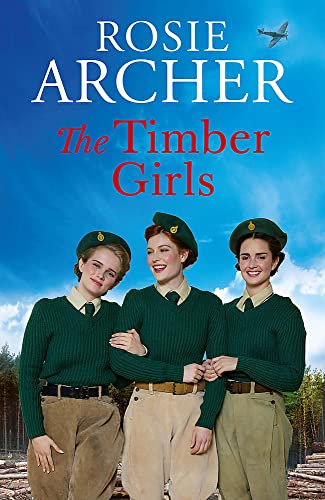The Timber Girls (Timber Girls, 1)
1942. Trixie Smith is fed up with working in a greengrocer’s and playing the piano in a pub in Gosport at night. She wonders how this is helping to win the war. So, she is on her way to Scotland to join the Women’s Timber Corps. On the ferry she meets Cy, a U.S. soldier from New Orleans on leave. Training to be a lumberjill is hard work, and Trixie finds that each of her new friends has something they’re running away from. Hen has left a privileged life for the promise of excitement. There must be some story behind Jo’s mercurial moods. And what caused the bruising on Vi’s arms? Doing a job that’s vital for the war effort makes women of these girls, while the boys at the front are facing hardship, danger, and death.
The dialogue with Cy is a bit stilted, meaning that we don’t really feel the ‘falling in love’ bit, but the conversation among the ‘girls’ is more natural. It’s page 258 before we discover something important about Cy, which I think should have been revealed earlier. The novel captures the period and the wartime spirit—that everything was changing, the eagerness to seize opportunities for love and fun because death could be around the corner. Though a lot of the detail is fairly banal stuff, it depicts the living and working lives of women workers, the camaraderie of the shared war effort, the newfound self-satisfaction in doing ‘a man’s job’, sexism and even threats from men. It is interesting to learn about ‘brashing’, ‘snedding’, cross-cut saws and spokeshaves and fretsaws, how to measure a tree’s height, fire and accident prevention, the infernal midges—all the business of forestry and felling trees. This is a ‘girls at war’ saga, a well-written, easy read.










